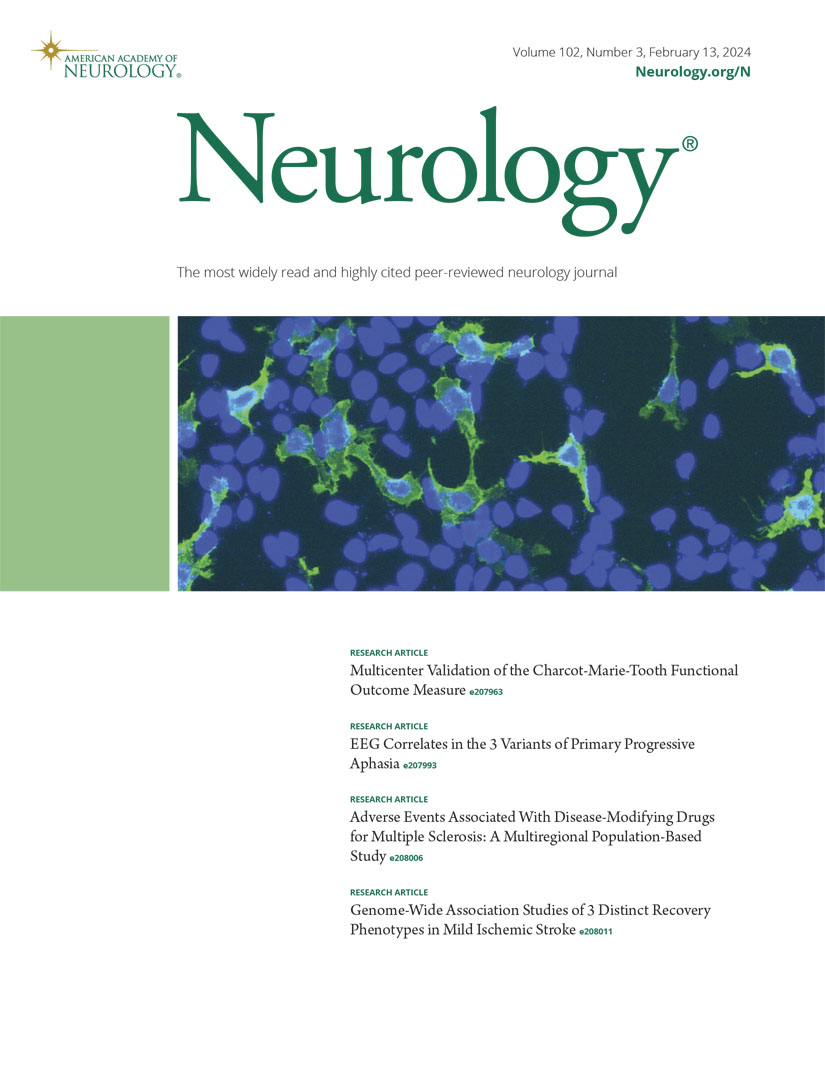癫痫持续状态协议在认可的国家癫痫中心协会成员之间的差异。
IF 7.7
1区 医学
Q1 CLINICAL NEUROLOGY
引用次数: 0
摘要
目的癫痫持续状态(SE)是一种需要紧急识别和医学处理的神经急症。跨中心的SE管理仍然是异构的。方法分析3级和4级癫痫中心的SE治疗方案。从每个方案中收集离散数据,包括稳定措施、治疗阶段的时间、药物、剂量和给药途径,并使用分类变量的频率和连续变量的中位数进行描述。将治疗时间和剂量分布与AES指南进行比较。结果共纳入256个SE处理方案。只有66%的SE方案详细说明了治疗时间。首次使用苯二氮卓类药物(BZD)的方案中有4%的剂量低于推荐剂量,首次使用非BZD的方案中有14%的剂量低于推荐剂量。61%的方案概述了输液治疗。尽管SE管理的及时性很重要,但三分之一的机构方案没有指定治疗时间。本文对美国住院患者SE方案的分析提供了关于输液治疗管理的专家意见,并强调了SE治疗的差距和改进目标。本文章由计算机程序翻译,如有差异,请以英文原文为准。
Status Epilepticus Protocol Variation Across Accredited National Association of Epilepsy Centers Members.
OBJECTIVES
Status epilepticus (SE) is a neurologic emergency that requires urgent recognition and medical management. SE management remains heterogeneous across centers.
METHODS
We analyzed SE treatment protocols from level 3 and level 4 epilepsy centers. Discrete data including stabilization measures, timing of treatment phases, medications, doses, and routes of administration were collected from each protocol and described using frequency for categorical variables and median for continuous variables. The distribution of treatment times and dosing were compared with the AES guideline.
RESULTS
A total of 256 SE treatment protocols were included. Only 66% of SE protocols detailed treatment times. Doses below recommendations occurred in 4% of protocols for initial benzodiazepine (BZD) and 14% for first non-BZD medications. Infusion therapy was outlined in 61% of protocols.
DISCUSSION
Despite the importance of timeliness in SE management, one third of institutional protocols did not specify treatment times. This analysis of US hospital inpatient SE protocols provides expert opinion regarding infusion therapy management and highlights gaps and targets for improvement in SE treatment.
求助全文
通过发布文献求助,成功后即可免费获取论文全文。
去求助
来源期刊

Neurology
医学-临床神经学
CiteScore
12.20
自引率
4.00%
发文量
1973
审稿时长
2-3 weeks
期刊介绍:
Neurology, the official journal of the American Academy of Neurology, aspires to be the premier peer-reviewed journal for clinical neurology research. Its mission is to publish exceptional peer-reviewed original research articles, editorials, and reviews to improve patient care, education, clinical research, and professionalism in neurology.
As the leading clinical neurology journal worldwide, Neurology targets physicians specializing in nervous system diseases and conditions. It aims to advance the field by presenting new basic and clinical research that influences neurological practice. The journal is a leading source of cutting-edge, peer-reviewed information for the neurology community worldwide. Editorial content includes Research, Clinical/Scientific Notes, Views, Historical Neurology, NeuroImages, Humanities, Letters, and position papers from the American Academy of Neurology. The online version is considered the definitive version, encompassing all available content.
Neurology is indexed in prestigious databases such as MEDLINE/PubMed, Embase, Scopus, Biological Abstracts®, PsycINFO®, Current Contents®, Web of Science®, CrossRef, and Google Scholar.
 求助内容:
求助内容: 应助结果提醒方式:
应助结果提醒方式:


